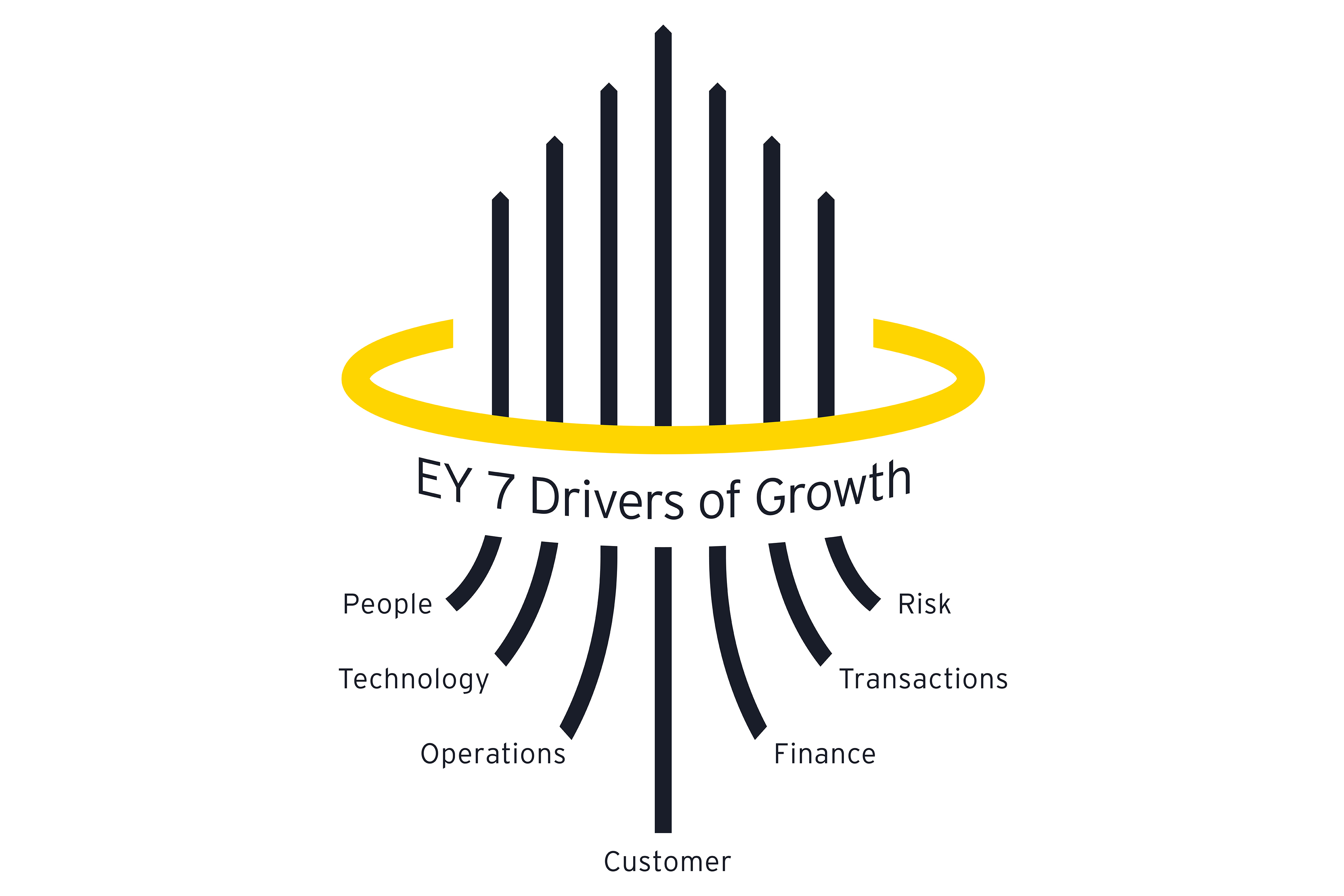3. Renewed innovation
Changing customer needs and buying behaviors – combined with the need to optimize the customer experience – are leading entrepreneurial businesses to prioritize renewed innovation. Customer-focused innovation can be a major source of competitive advantage, which is why entrepreneurial businesses are heavily focused on this area. They are looking at how they can re-evaluate and reshape product and service portfolios in line with changing customer needs and expectations. It’s not just innovations targeted at the end customer that are on the agenda either. Entrepreneurial businesses are also experimenting with the customization of products and services for different channels and distributors.
Innovation is often linked to technological transformation. Indeed, today’s rapid rate of technological change demands that businesses capitalize on the power of technology as a driver of growth. Successful entrepreneurial businesses are therefore using technology roadmaps to plot enhanced customer experiences. They are also embarking on technology transformations that put humans at the center and enable technology adoption at speed and innovation at scale.
An example of an entrepreneurial business that has innovated successfully, using technology but keeping humans at the center, is the US online personal styling service Stitch Fix. Stitch Fix identified that product returns due to size and fit mismatch were squeezing margins in the online clothing industry. So, it introduced a new business model that uses a fine mix of machine intelligence and human experts to deliver the right clothing to a customer.
The Stitch Fix team conducts an extensive diagnostic to build a customer’s preference profile. Then a sophisticated algorithm analyzes the customer’s profile and trawls through the company’s inventory to recommend the most relevant products for the customer. Over time, the algorithm absorbs feedback from both the human stylists and the customer, gradually making the recommendation engine more robust. Importantly, Stich Fix does not leave the ultimate clothing recommendations to the algorithm. Human stylists, while matched to individual customers by means of an algorithm, review each suggestion and refine the selection that is put forward to the customer.
Stitch Fix grew at a compound annual growth rate (CAGR) of approximately 50% in the first four years after introducing its new business model.
4. Marketing focused on customer retention
It is far easier and cheaper to retain existing customers than it is to acquire new ones. This may be ancient wisdom but, more recently, the pandemic has reinforced the principle to CEOs, business owners and founders. Many have asked themselves the following question: “How much more resilient and profitable would my business be if customer loyalty levels increased and capabilities to cross-sell and up-sell were improved?”
As a result of asking this question, entrepreneurial businesses are looking to invest heavily in marketing initiatives that enable them to develop deep, long-term and enduring relationships with their customers. To drive high levels of loyalty and customer retention, they want to develop innovative and responsive digital marketing strategies. These strategies are designed to either align with, or replace, traditional marketing campaigns. The overall objective is not just to retain customers, but also to generate additional sales from them through cross-selling and up-selling.
As well as investing in digital marketing, entrepreneurial businesses plan to develop comprehensive brand management strategies, with a strong focus on building enthusiastic and vocal communities of brand ambassadors. They are also prioritizing the design and launch of highly effective customer loyalty programs.
The Vienna Tourist Board embarked on a proactive brand management strategy when it set about tackling negative social media reviews of the city, which were incorrect but adversely impacted customer opinion. It launched an innovative marketing campaign called “Unrating Vienna”, which urged visitors to discover the city without the help of online reviews. As part of the campaign, it posted absurd negative reviews on billboards in prominent places, confronting readers with the question: “Who decides what you like?”
Through the campaign, the Vienna Tourist Board was able to educate travelers on the effects of biased online reviews and mitigate the impact of unfair reviews on the city. The city was also able to ignite a broader public discussion about unfair online reviews. In 2023, both the Economist and Condé Nast Traveler ranked Vienna as the most livable city in the world.
5. Renewed approach to pricing
Pricing has been a major priority for entrepreneurial businesses over the past 12 months. This is due to inflation (particularly soaring energy costs and higher purchasing costs arising from supply chain disruption) and hikes in interest rates, which have increased the cost of capital. In fact, pricing was the top customer-related priority for entrepreneurial businesses at one point. While the relative importance of pricing has declined more recently, it remains a concern and entrepreneurial businesses continue to pay close attention to margin management, as well as their prices and pricing strategies.
To enable better pricing decisions and more effective sales programs, entrepreneurial business are investing in improved competitive and market intelligence. They are also inclined to undertake a frequent review of prices and margins for specific customer segments. Furthermore, they are exploring ways to make their pricing models more dynamic so that the pricing of their goods and services adjusts in response to market conditions.
In fact, more and more entrepreneurial businesses are re-evaluating and reshaping their overall commercial models in response to the current economic climate. They are considering the costs of sales and service, as well as pricing. Improved forecasting is being prioritized and entrepreneurial businesses are undertaking scenario modeling to better understand how changes in their pricing strategies impact their pipeline, revenue and margins. Building on their investment in enhanced customer experiences and improved customer loyalty, entrepreneurial businesses are increasingly making use of customer lifetime value models to transform their sales, pricing and retention strategies.
As an example, US hotelier Ritz-Carlton has calculated that the average lifetime value of a customer is $250,000. In other words, this would be the amount of money that a customer would spend on average at Ritz-Carlton hotels during their lifetime, calculated back to today’s value. Based on this calculation, Ritz-Carlton decided to empower its employees to adopt a relational, rather than transactional, approach with its customers. For example, every employee is given automatic authority to spend up to US$2,000 per day, per guest, to rescue a guest experience without seeking authorization. With the help of this strategy, Ritz-Carlton ranked first in the JD Power North America Hotel Guest Satisfaction Index Study seven times in eight consecutive years.
Shift in focus
Entrepreneurial businesses are currently navigating massive changes in customer needs, behaviors and buying patterns. They are having to respond to significant fluctuations in demand, rapid adoption of digital technologies by customers, the rise of generative AI and its implications for customer service, the influence of sustainability on customers’ needs and the way they buy, and high inflation rates, among other trends.
So, it should come as no surprise that the customer-related priorities of entrepreneurial businesses have been shifting quite dramatically in recent times. For example, nine months ago, an EY Private analysis showed the inflationary environment made pricing the number one concern for entrepreneurial businesses. That was hardly a priority 18 months ago.
Now that the lasting consequences of the pandemic are better understood, pricing structures have been reviewed, and inflation is beginning to ease in many markets, the leaders of entrepreneurial businesses are asking themselves this question: “How could my growth be more sustainable?”
EY Private research suggests that the answer to that question is to go back to the basics. Ask yourself: “What made my company so successful to start with?" You were probably obsessive about putting your customers at the center of everything you did. You knew what they needed, not just what they wanted.
Now you must truly understand how those needs have evolved. You also need to ensure that your business is agile and resilient enough to quickly adapt to changing customer expectations and to flexibly respond with new product and service innovations. You should look to drive high levels of customer loyalty based on customer delight, not just satisfaction.
These considerations are exactly what today’s top five customer-related priorities of entrepreneurial businesses seem to address. Whether a business was founded five, 10 or 25 years ago, or by a distant generation, it’s about going back to basics and putting the customer truly at the center of everything you do.



